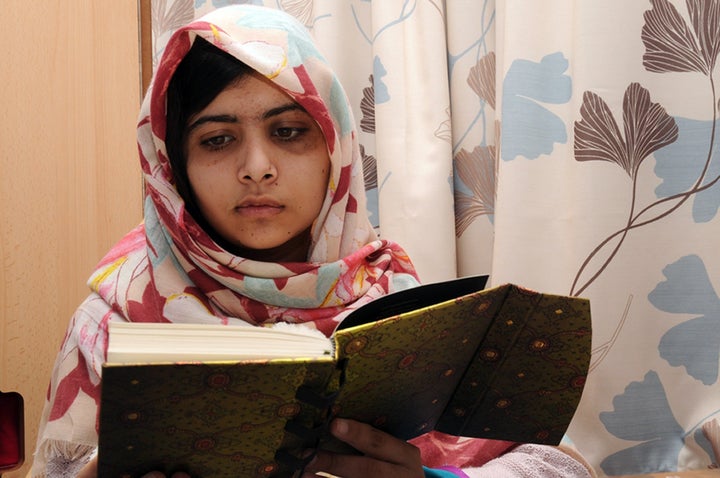
One month ago, when we heard the story of a 14-year-old Pakistani girl, Malala Yousufzai, brutally shot in the head to silence her outspoken advocacy of girls' education, it's safe to say we were universally horrified. Her individual story, say reporters and several editorials in leading Pakistani newspapers, has cut through a blur of rhetoric about the Taliban and equality for girls in a way that has started to shift public opinion even inside Pakistan.
Malala's story is important not only as a political story and a news story, but as a human rights impact story -- and what it can inspire about our desire to get involved and "take action." When we see and hear a story like hers, we want to do something.
Social science research supports this impulse and impact. The human brain may need to connect on an emotional level in order to take action. As a case in point, Paul Slovic, a prominent scholar in the field of "risk communication," found that the narrative of a single person's story is more likely to inspire an audience (viewer, listener, reader) to donate money or take other action than a narrative that relies on numbers alone to show impact. So, in other words, we are more likely to donate money to alleviate global poverty when we read the story of one mother who cannot feed her child than we are when we read a story that tells us that "millions cannot feed their children." This is only one example of the ways audiences can be inspired to take action after experiencing a story that arouses our emotions, but it's a key concept in the development of new ways of thinking about social impact in the digital era -- and new tools to facilitate meaningful social action.
At Link TV, which was founded on the principles of connecting the world through global news and perspectives that are hard to find, we wanted to experiment with this idea of connecting news to social action. And last week, we launched the result of that experiment, the LinkTV World News app, created in partnership with The Bertha Foundation. The app's team of 20 multilingual editors and journalists monitors and curates news videos and raw videos -- along with related articles and in-depth documentaries -- from more than 50,000 global sources, including state-run broadcasters, alternative media outlets, and many others that raise voices and perspectives that are hard to access elsewhere. The big idea is to pull together -- on equal footing -- both real voices and individual narratives on the ground combined with news from hundreds of global sources.
Once users take a deeper dive into global events and news in this way, they can then use the app's "Take Action" tool to connect them with a relevant social action -- donating, sharing information, volunteering, signing a petition, or more. For example, a video on melting Himalayan glaciers includes a link to the World Development Movement's climate campaign, while a documentary about Iranian women's rights activists points viewers to the Global Fund for Women's donor page. For those who are moved and activated by the ongoing story of Malala Yousufzai, take action through the UN Fund for Women.
Of course, the basic foundation here is not new. We've long known, on basic visceral levels, that visual narratives are powerful motivators. As only one of so many examples, we can look to the televised and reported images from the Civil Rights movement -- the vicious confrontation of police and peaceful marchers on Pettus Bridge in Selma, Alabama, circa 1965 -- among so many others. But now, we have the digital tools to make connections between stories, news and social actions.
